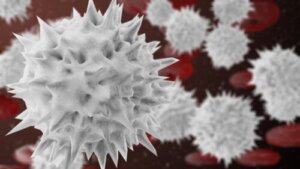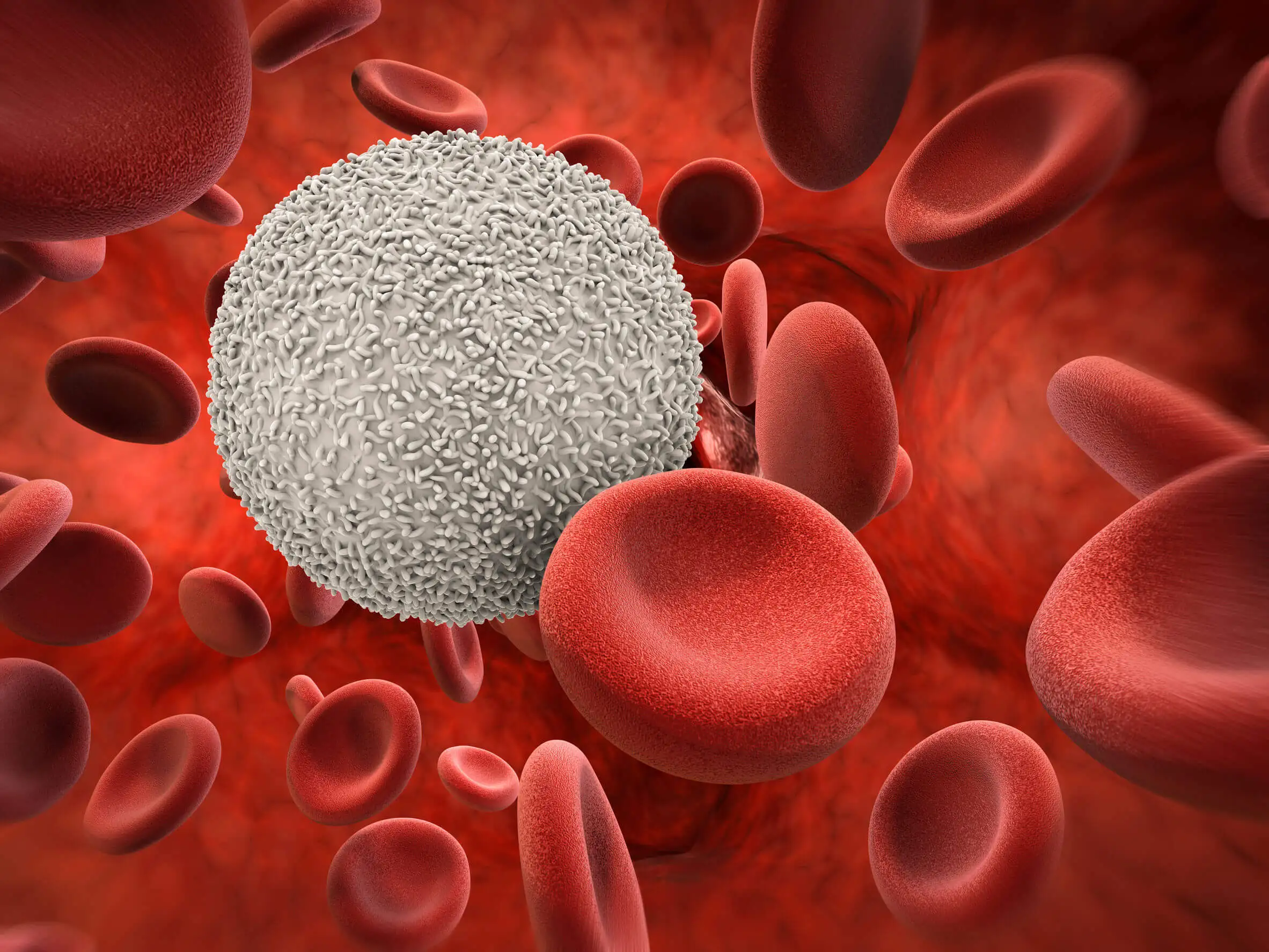Segmented Neutrophils: What Are They and When Do They Change?


Reviewed and approved by the nurse Leidy Mora Molina
White blood cells, or leukocytes, are immune cells involved in the defense and protection of the human body. This family consists of neutrophils, basophils, eosinophils, lymphocytes and monocytes. But what are segmented neutrophils?
Neutrophils, together with basophils and eosinophils, form a group of leukocytes called granulocytes or polymorphonuclear cells (PMN). Studies estimate that these are the main phagocytic cells in the blood and constitute 50% to 70% of all white blood cells.
What are segmented neutrophils?
Neutrophils are considered the first line of cellular defense against germs and foreign bodies. They are produced in the bone marrow by a process called phagocyte poiesis. Subsequently, they pass into the blood circulation, completing a half-life of 2 to 3 days.
There are two forms of neutrophils in the human body. Segmented neutrophils are the mature variant, acting directly in the tissues to fight infections.
On the other hand, band neutrophils are an immature form that accumulate in the bone marrow as a reserve. Likewise, this type of neutrophil tends to increase its presence in the blood in the presence of an infectious process of bacterial origin.

How are they measured and what are the normal values?
Neutrophil levels are determined by a white blood cell differential as part of a complete blood count (CBC). This test is performed on a blood sample taken by finger stick or venous blood draw.
The collected blood sample is entered into a machine called a hematology analyzer. It has the ability to identify, classify and count each of the cells that make up the blood.
The normal concentration of leukocytes in blood is usually 4500 to 11,000 cells per microliter of blood. From this result, it is possible to obtain a differential count of each of the types of white cells that constitute this group.
Normal values of segmented neutrophils in blood range from 1800 to 7700 cells per microliter. This takes into account that neutrophils represent 50% to 70% of white blood cells, as already highlighted.
You may be interested in reading: How Often You Should Get Blood Tests?
When do the values of segmented neutrophils change?
Segmented neutrophil counts are helpful in identifying acute or chronic diseases that compromise the body’s health. High neutrophils point to infectious processes, while decreased neutrophils are associated with a malfunctioning immune system.
Elevated neutrophils
The elevation in the concentration of neutrophils in the blood is called neutrophilia. Research states that this is defined as an absolute number of neutrophils greater than 7500 cells per microliter of blood.
Some of the most common causes of high values of segmented neutrophils are the following:
- Eclampsia
- Burns
- Intense exercise
- Bacterial infections
- Liver damage and necrosis
- Acute hemorrhage
- Emotional and metabolic stress
- Inflammatory disorders, such as rheumatoid arthritis or gout
Other less frequent causes include myeloproliferative syndromes, chronic myeloid leukemia, metastatic infiltration, and myelofibrosis. Neutrophil counts above 50,000 cells per microliter are called a leukemoid reaction and can be seen in pertussis and infectious mononucleosis.
Low neutrophils
Decreased neutrophil levels are called neutropenia and occur when the count falls below 1,500 cells per microliter of blood. Neutropenia can be mild, moderate, or severe and is associated with a high risk of infection.
Common causes include the following:
- Aplastic or megaloblastic anemia
- Chemotherapy or radiotherapy
- Autoimmune diseases
- HIV/AIDS
- Sepsis
- Hypersplenism
- Hypothyroidism
- Myelofibrosis
- Cirrhosis

Discover more: Aging of the Immune System and How to Fight It
When to seek medical attention?
An alteration in the segmented neutrophil count is a warning sign that something is wrong in the body. The causes of these variations are very broad and range from bacterial and viral infections to autoimmune and degenerative processes.
Fever, rapid pulse, rapid breathing, vomiting and diarrhea are symptoms that point to a possible infectious process. On the other hand, where there’s difficulty breathing, signs of dehydration, and loss of consciousness, help should be sought as soon as possible.
All cited sources were thoroughly reviewed by our team to ensure their quality, reliability, currency, and validity. The bibliography of this article was considered reliable and of academic or scientific accuracy.
- Barbieri, G., Flores, J., & Vignoletti, F., (2005). El neutrófilo y su importancia en la enfermedad periodontal. Avances en Periodoncia. 2005 ; 17(1): 11-16. https://scielo.isciii.es/scielo.php?script=sci_arttext&pid=S1699-65852005000100002#:~:text=El%20neutr%C3%B3filo%20es%20una%20de,disminuida%20respuesta%20inmune%20del%20hu%C3%A9sped.
- Berenguer, M., Blanquer, M., Labaddia, F., Moraleda, J., (2012). Protocolo diagnóstico de la neutrofilia aguda y crónica. Medicine – Programa de Formación Médica Continuada Acreditado. 2012;11(21):1313-1316. https://www.sciencedirect.com/science/article/pii/S0304541212704559
- Sanz, J., Gómez, A., Sosa, R., Prieto, M., (2017). Introducción al sistema inmune. Componentes
celulares del sistema inmune innato. Medicine. 2017;12(24):1369-78. http://www.residenciamflapaz.com/Articulos%20Residencia%2017/158%20Introducci%C3%B3n%20al%20sistema%20inmune%20innato%20MEDICINE%2002-17.pdf - Huerta J, Cela de Julián E. Hematología práctica: interpretación del hemograma y de las pruebas de coagulación. En: AEPap (ed.). Curso de Actualización Pediatría 2018. Madrid: Lúa Ediciones 3.0; 2018. Madrid: Lúa Ediciones 3.0; 2018. p. 507-526.
- Oliva I, Magaña V, Fragoso R, Cuairán V. Neutropenia cíclica. Reporte de un caso. Rev. Odont. Mex. 2015; 19( 4 ): 246-252.
- Del Fabbro M, Francetti L, Pizzoni L, Rozza R, et al. Neutrophil physiology: role and mechanism of action in the immune response at gingival level. Minerva Stomatol. 2000 May;49(5):227-48.
- Torrens, M. (2015). INTERPRETACIÓN CLÍNICA DEL HEMOGRAMA. Revista Médica Clínica Las Condes, 26(6), 713-725. https://www.elsevier.es/es-revista-revista-medica-clinica-las-condes-202-articulo-interpretaciyn-clynica-del-hemograma-S0716864015001480
- Peña Irún, Á., Fontanillas Garmilla, N., González Santamaría, A., & Fernández Santiago, R. (2008). Neutropenia y fármacos. SEMERGEN – Medicina de Familia, 34(2), 91-93. https://doi.org/10.1016/s1138-3593(08)71856-2
- Sobrevilla Calvo, P. D. J., Sobrevilla Moreno, N., & Ochoa Carrillo, F. J. (2016). Neutropenia inducida por quimioterapia: el punto de vista del oncólogo. Gaceta Mexicana de Oncología, 15(6), 344-349. https://www.elsevier.es/es-revista-gaceta-mexicana-oncologia-305-articulo-neutropenia-inducida-por-quimioterapia-el-S1665920116300876
This text is provided for informational purposes only and does not replace consultation with a professional. If in doubt, consult your specialist.








